【Lesson6】Hand shape and hand position at Koza
Tenshinryu Online members have a very good question.
In Kenzazen’s(剣坐禅) video, I showed Koza’s(胡坐) attitude.The question is about hand shape and position in Koza.
This time, the lesson will be conducted by answering the questions.
One of the interesting aspects of Japanese traditional culture is TokozaBunka(床座文化 Culture sitting directly on the floor).
As you know, TokozaBunka exists outside of Japan.
Above all, TokozaBunka in Japan can be said to be extremely ingenious in terms of manners and behavior.
In modern times, the correct sitting style in Japan is called Seiza(正座).
However, in the past, it was called “Tanza・Hashiza(端坐)”, “Kashikomaru(畏まる)”, “Tsukubau(蹲う)”, etc…, and it became known as Seiza(正座) after the Meiji era.
At Tenshinryu, this is called Ougiza(扇坐 It means sitting with both knees open like a fan).
However, this sitting style has been seen for a long time.
(There is a discourse that he did not sit up until the middle of Edo period, but before that, it is natural to think that it existed even if it was not used regularly because it is also seen in pictorial drawings such as the Sengoku period.)
It is said that the tatami mats became widely used especially in everyday life after the mid-Edo period.
It is said that this is partly due to Sado (茶道 Tea ceremony) that takes place in the narrow Chasitsu (茶室 Tea room for Sado).
(There is a theory that the founder of the tea ceremony, Sen no Rikyū did not use Seza in tea ceremony.)
Before seiza became routine, several sitting styles were used.
Rakuza(楽坐 way of sitting on the ground with the sole of both feet pressed together), Tatehiza(建膝 standing one knee), Agura/Anza(胡坐/安坐 crossed legs), and Kameza/Kikyo(亀坐/亀居 sitting posture with the legs bent back on each side. W-sitting ).
These sitting styles were also used in ceremonies and other occasions, and were used according to gender and circumstances.
Rakuza is the official sitting style when wearing Ikansokutai(衣冠束帯 full court dress of traditional fashion), and it is also depicted in portraits of successive Tokugawa Shoguns(徳川将軍).
Agura(胡坐) is a simplified version of Rakuza(楽坐).
In Tenshinryu, Agura(胡坐) is called a Koza(胡坐).
Koza is a sitting method that has been used on a daily basis since the middle Edo period.
In Tenshinryu, the technique group in the form of Koza is called the Kosiki/Koden(古式/古伝 ancient style), and Tenshinryu attach great importance to it.
In this Koza posture, hold both hands so that their thumbs are hidden, and place the right hand on the base of the right thigh, the left hand on the left knee, and the palm side up.
Tenshinryu strictly defines the shape and position of these hands.
What is the meaning of this as a historical rule is a very difficult explanation.
First of all, in Koza and Rakuza, there are cases where the picture is Hirade(平手 flat hand. Do not hold the fist).
You can also see a picture with the fist held up and the back of the hand up.
So, as a historical manner, the Tenshinryu method is not always absolutely correct.
(This is common to all manners and techniques.)
Now I will explain the details.
・HIDING THUMB
The first is about hiding your thumb.
When holding a fist with Koza, you have to hide your thumb.
In the old Japanese manners, there is a custom of hiding the thumb nail in the case of a Hirade(平手 flat hand).
Hiding your thumbs is also derived from old Japanese customs.
(Even today, a small number of people have the custom of “hiding your thumb when you see the hearse.”)
“It’s beautiful not to show your nails.”
“Hide important things (thumbs).”
Often such explanations are given, but the fact is that it is a very old custom and the truth is no longer known.
Tenshin-ryu includes the aspect of samurai culture(武家文化 Bukebunka), such as “”I will not do Koiguchi wo kiru.” or “Do not hold the handle(柄 Tsuka)”.
*Koiguchi wo kiru(鯉口を切る)
The movement of pulling out a sword a littlie by placing the thumb on the Tsuba (鍔 handguard) when drawing a sword from the Saya(鞘 sheath).
・HOLDING A FIST
Opening your hands means showing in your hands.
(lay one’s card on the table)
Then, what is the reason why you do not hold the fist and open it? Actually, it is not clear.
One hypothesis may be that when holding a fan(扇 Ougi) or Shaku(笏 in Japan, a short rod that is carried on ceremonial occasions, called “Shaku”) in the ceremony, it came from trying to make both hands into symmetry.
Such symmetry is found in old pictures and remains in modern Shinto manners.
And it is the hypothesis that they did so even if they did not have a fan or Shaku.
・ABOUT HAND DIRECTION
There are two types of old pictures: to direct upwards palms and to direct upwards the back of the hand.
In Tenshinryu, the palm side is up.
Why palm side is up?
This is because the elbow drops naturally and it is easy to pull out the sword in case of suddenness.
However, if you look at it normally, you can see inside your hands, your elbows will fall and you will be in a natural, relaxed position.
You can show that you are not in a battle posture.
This is the same theory as the hand position in Ougiza (Seiza) in Tenshinryu.
・ABOUT THE POSITION OF THE FIST
In modern times, the act of putting a fist on the knee is often used for Agura.
However, in Edo and earlier paintings, most of them were painted with their hands around the base of their thighs, and rarely painted on their on the knees.
As mentioned above, in Tenshinryu, the right fist is placed at the base of the right thigh, and the left fist is placed on the left knee.
In other words, the position of the right fist in Tenshinryu is a general position.
So why put the left fist on the knee in Tenshinryu?
That’s because it’s a way to show that you don’t pull your sword away from Koiguchi with your left hand.
In the state of wearing Tachi(太刀) and sitting,, this is called Haizaho(佩坐法) in Tenshinryu.
At this time, if you place your left hand at the base of the left thigh, the left fist and Tachi will be very close together.
It can be said that the state where Tachi and fist are in contact is still unsuitable as a manner.
This is the basic reason.
And this is my interpretation, but the advantage of this posture is that it is actually very easy to pull a sword.
If you practice for a long time and are not well proficient, you will probably not notice this difference.
Despite being a posture that can be fought at any time, others do not know it, but rather are polite. This is the ideal Samurai manner.
For these combined reasons, the shape and position of Koza’s hand has passed down to Tenshinryu.
In modern times, even in traditional martial arts, there are few ways to passed down orally and teachings on the sitting method at a practical level.
If we don’t master the details, including these details, we will move away from the true form of Tenshinryu.
In that sense, the questions we have are very meaningful and insightful.
I’m glad you brought that up.
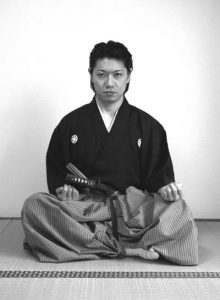
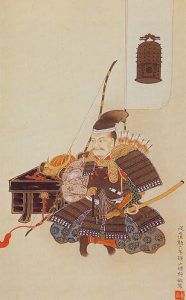
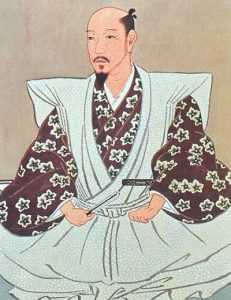
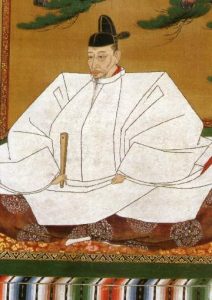
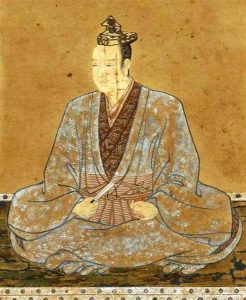
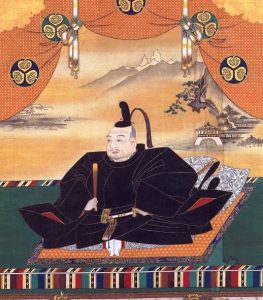

【Lesson6】胡坐における手の形、位置について
天心流オンラインのメンバーから、とても良い質問をいただきました。
剣坐禅に関する動画の中において、胡坐(こざ)の姿勢を示しましたが、この時の手の形、位置についての質問です。
今回はそれに回答する形で講座を行います。
日本の伝統文化の面白さのひとつに、床座文化(ゆかざぶんか)があります。(※床に直接座る文化の事)
実際、多くの文明において床座文化は見られるものですが、その中でも日本の床座文化は、礼儀作法・所作などの面において極めて工夫がなされていると言えるのではないでしょうか。
現代では正座、天心流では扇坐(おうぎざ)と称する座り方は、往時は「端座(たんざ・はしざ)」「畏まる(かしこまる)」「蹲う(つくばう)」などと呼ばれたもので、正座と呼ばれるようになったのは明治時代以降です。
しかし座り方そのものは古くから見られます。
(江戸中期まで正座をしなかったという言説もありますが、それ以前、戦国期などの絵図にも見られるため、常用されないまでも存在したと考えるのが自然です。)
そして特に畳が普及した江戸中期以降に、特に日常生活の中でも用いられるようになったと言われます。
これは狭い茶室で行われる茶道文化の影響もあるとも言われています。
(千利休は茶の湯においては正座を用いていなかったという説もあります。)
正座が日常的に用いられるようになる以前、いくつかの座り方が用いられました。
楽坐(らくざ)、建膝(たてひざ)、胡坐(あぐら・安坐<あんざ>とも)、亀座(かめざ・亀居<ききょ>とも)などです。
こうした座り方は、儀式などでも用いられたるものであり、性別や状況に応じて使い分けられました。
楽坐は衣冠束帯を着用した際の正式な坐法であり、これは歴代徳川将軍の肖像画などでも描かれています。
この楽坐の簡易版といえるのが胡坐(あぐら)です。
天心流では胡坐(こざ)と読みます。
江戸中期以降も日常的に用いられた坐法です。
そして天心流では特にこの胡坐を用いた技法群を古式(古伝)と称し重視しています。
この際には、両手を親指を隠すように握り、右手を右腿の付け根、左手を左膝の上に、手のひら側を上として置きます。
天心流ではこの手の形と位置を厳しく定めています。
では故実としての意味はどうなのかというと、それはとても難しい説明になります。
まず、胡坐や楽坐の際の絵図では、平手にする場合もあれば、また手を握り、手の甲を上とする場合も見受けられます。
ですから、歴史的作法としては、天心流の方法が必ずしも絶対ではありません。
それでは細かく見ていきましょう。
- 親指隠し
まず親指を隠すということについてです。
日本の作法では、平手の際に親指の爪を隠すという風習があります。
この親指隠しも同様の風習に由来します。
(現代でも「霊柩車を見たら親指を隠す」という風習を伝えるところもあります。)
爪を見せないことが美しい、あるいは大切なものを隠すなどの理由が言われておりますが、非常に古い風習であり本当のところはもはやわからないというのが実情です。
天心流においては武家文化において「鯉口を切らない」「柄を握らない」などを表現する作法という側面を含んでいます。
- 握る事
手を開くことは、手の内を見せるという意味合いがあります。
では開かない理由はなにかというと、それははっきりしたことはわからないというのが実情です。
ひとつの仮説としては、中啓(ちゅうけい・末広<すえひろ>とも)や笏などを持った際に、両の手の形をシンメトリーとするためから来た可能性があります。
これは往時の絵図にも見られ、現代でも神道に受け継がれるものであり、この何かを持った際の手の形を、空手(無手)の場合にも用いたという仮説です。
- 向きについて
絵図では手のひら側を上とする場合、手の甲を上にする場合があります。
天心流では手のひら側を上とします。
なぜ手のひらを上とするかといえば、これは天心流では肘が自然と下がって、とっさの際に刀を抜きやすいからであると言えます。
しかし普通に見れば手の内を相手側に見えるようにしており、肘もおりてくつろいだ姿勢となり、武張った姿勢となることを避けることが出来ます。
これは扇坐(正座)における手の位置と同様の理論です。
- 拳の位置について
現代では、膝上に拳を乗せる所作が好んで行われますが、江戸期やそれ以前の絵図では、ほとんどが腿の付け根あたりに手を置いて描かれており、膝上に置かれた形で描かれたものは稀です。
前述の通り、天心流では右拳は右腿の付け根に置き、左拳は左膝の上に置きます。
つまり右拳の位置は一般的な位置だと言えます。
それではなぜ左拳は膝の上に置くのかというと、教えとしては、左手を鯉口から離して刀を抜かないことを示す作法として伝えられます。
鯉口だけでなく、そもそも太刀を佩いた状態、天心流ではこれを佩坐法(はいざほう)と呼びますが、これで左拳を腿の付け根に置くと、自然と太刀の上に左拳が来ることとなります。
狭く、太刀と拳が接する状態はやはり作法として相応しくないということも言えるでしょう。
そしてこれは私の解釈ですが、この姿勢は実は太刀をとても抜きやすいという利点が隠されています。
長く稽古し、よくよく習熟しなければおそらくこの差には気づきません。
こうした複合的な理由によって、天心流に伝わる胡坐の手の形や位置となっていると言えます。
現代では、古武術であってもその座法に関する口伝、教えを実伝レベルで伝えている流儀は多くありません。
このような細かいところも含めて、心身に刻みつけて修得しなければ、現代に生きる我々はますます天心流の真諦から遠ざかってしまうでしょう。
そういう意味で、今回いただいた質問はとても意義深いものであり、深い洞察力に拠るものと言えます。


コメント